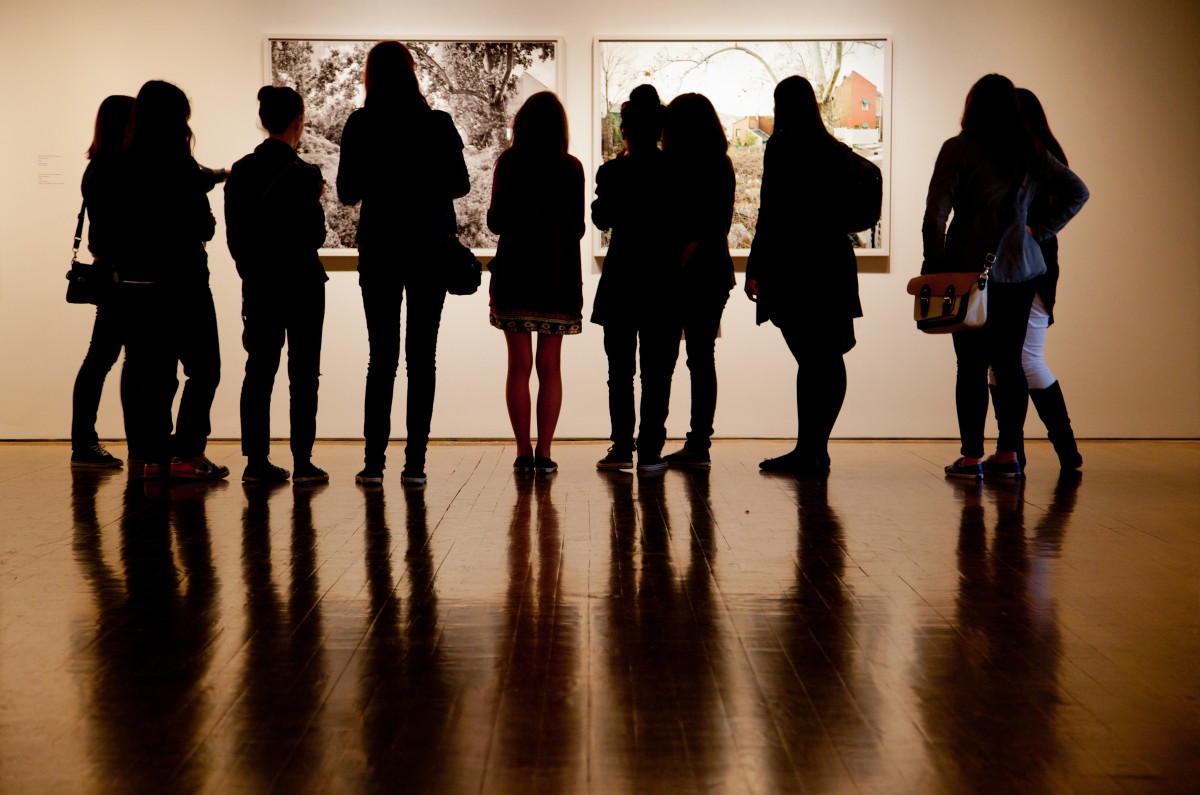Four tips to get your group talking about art

Christina Gapic
“I just don’t know how to talk to my groups about art!”
We often hear this refrain from organizations who are considering bringing their clients to the AGO for self-guided tours. They tell us that they and their clients worry that you need a deep understanding of art history to appreciate art the “right way.”
The truth is there is no "right way” to experience art. Art is for everyone, and there are many experiences with art as there are people who enjoy it. Some of us like a lot of facts to better understand the work and its context. Others prefer a story or an interpretation. Others like to experience the emotions that encounters with art can provoke.
We recently held an open house for the AGO’s Community Access Initiative members and took them on a tour to help them guide their clients – many of who have never visited an art gallery before – through the AGO.
The AGO offers two ongoing community access programs to organizations serving marginalized communities: our Neighbourhood Access Program (NAP), which allows community organizations to book free self-guided visits to the AGO; and our Community Membership Program (CMP), which provides community organizations with four AGO membership cards (each card admits two adults and as many as five youths under age 18) to lend to their clients. Through these two programs, we serve more than 300 community organizations across the GTA.
These organizations allow us to introduce art to people who may never have set foot in a gallery. We work hard to embody our "art matters" motto — an assertion that art makes a difference in people’s lives — and part of that is making everyone to feel welcome and excited to experience it for themselves.
Here are some of the tips and tricks we shared with our Community Access Initiative members:
Observe
Invite people to take a close look and provide a timeframe for them to look. Doing this allows people to take a “visual inventory” of the work and focus. On average, people spend only nine seconds looking at an artwork – taking your time allows you to notice more details and think about digest what you're seeing.
Describe
Describe the work as a group to establish an understanding of what is being seen. It may be useful to start by listing what everyone sees. Some things you can touch on include:
- Line and shape: for example ask, "What lines and shapes do you see in this drawing?"
- Colour: "Does any one colour dominate this painting?"
- Composition: "Where is the figure in relation to the landscape?"
- Material: "What do you think this sculpture is made of?"
- Technique: "By looking closely at this painting, can you describe the brushstroke?"
- Subject matter:"What objects do you see in this painting?"
Interpret
This is about giving meaning to the artwork. Responses can vary widely, so encourage different views and use ideas generated to expand on the conversation. Let people come to their own conclusions. Some things you can touch on include:
- Time and place: "What season is suggested by this painting?"
- Narrative:"What is happening with these two people?
- Mood or psychological effect: "What is the overall mood of this photo?"
- Artist's intention: "Why do you think the artist decided to use these objects to create this sculpture?"
- Artist's biographical information: "What possible influence do you see of this artist's homeland in this drawing?"
- Historical and social context: "This painting was done in 1960. Are there things in the work that you associate with that time?"
Connect
Encourage members of the group to connect the works to their own life experiences. This will help them gain new insights and will make the works more relevant. Ask if they like the works, and feel free to share your own opinions. Here are some ways to make connections:
- Personal life experience: "Does this look like the Toronto of today or the Toronto of when you were a child?"
- Psychological and emotional effect: "How does this painting make you feel?"
- Personal opinion: "Do you like this sculpture?"
- Cultural changes and world events: "Does this war scene remind you of any specific conflict in the news?"
- Other artwork: "How does this drawing of a landscape compare to the painting next to it?"
